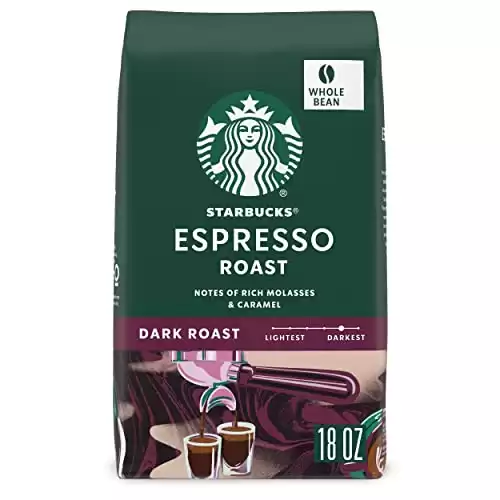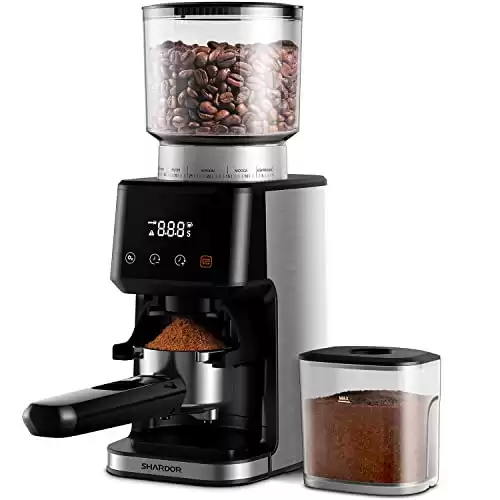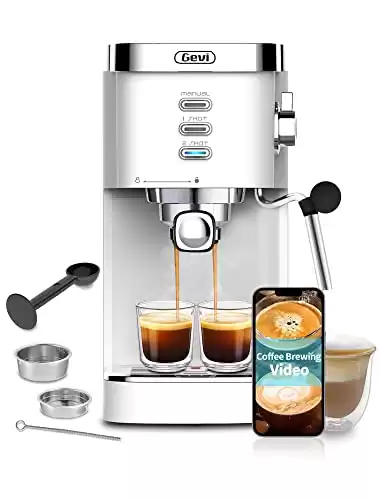For caffeine enthusiasts, nothing beats a delicious shot of espresso or a warm cup of coffee to start the day. While both drinks come from the same coffee bean, there are significant differences in how they are prepared and consumed. In this blog post, we’ll dive into the unique characteristics of espresso and coffee, so you can decide which drink is right for you.
1. Preparation
The most significant difference between espresso and coffee lies in the preparation process. While coffee is made by brewing hot water over coffee grounds, espresso is created by forcing hot water through finely-ground coffee, resulting in a much more potent and more concentrated shot. Espresso is made using an espresso machine, which forces pressurized water through the coffee, producing a thick and creamy layer of foam called crema. Coffee, on the other hand, can be made using various methods, including drip, pour-over, French press, or even instant coffee.
2. Flavor
Espresso and coffee also differ in flavor. Espresso has a bold and rich flavor, with a strong, intense taste that can be somewhat bitter. It’s also quite acidic, due to the high concentration of coffee and the short brewing time. Coffee, on the other hand, is more mellow and smoother, with a less intense taste and a lower acidity. The flavor of coffee can vary greatly depending on the brewing method and the type of coffee bean used.
3. Caffeine Content
While espresso is more concentrated and stronger in taste, it contains less caffeine than a typical cup of coffee. An 8 oz. cup of coffee typically contains 95-165mg of caffeine, while a 1 oz. shot of espresso contains only about 63mg. However, since espresso is usually consumed in smaller quantities, the caffeine hit can feel much stronger than with coffee. Some people prefer espresso for a quick, energizing boost, while others choose coffee for a more sustained caffeine buzz.
4. Serving Size
The serving size also differs between espresso and coffee. Espresso is typically served in small shot glasses, ranging from 1-2 ounces. On the other hand, coffee is served in larger cups, usually ranging from 8-16 ounces. This means that coffee provides a more filling and satisfying experience than espresso, consumed in smaller doses. Coffee is typically enjoyed with added milk, cream, sugar, or flavors, while espresso is a pure shot.
5. Price
Finally, the price difference between espresso and coffee can be significant. Due to the equipment and time required to make espresso, it is generally more expensive than coffee. Coffee can be made using various brewing methods, so the price can vary greatly depending on the type of coffee and the brewing process. However, serving sizes also play a role, as a single shot of espresso can cost as much or more than a regular cup of coffee.
Here are the benefits of having the best home coffee grinder for espresso:
Consistent Grind Size: A high-quality coffee grinder ensures consistent grind size, which is crucial for brewing espresso. Consistency in grind size allows for even extraction, resulting in a well-balanced and flavorful espresso shot.
Customizable Grind Settings: The best home coffee grinders for espresso offer adjustable grind settings. This versatility allows you to finely tune the grind size to match your preferred brewing method or espresso machine, enabling you to achieve the perfect espresso shot tailored to your taste.
Enhanced Flavor and Aroma: Freshly ground coffee beans provide a superior flavor and aroma compared to pre-ground coffee. By grinding your beans just before brewing, you can preserve the delicate and complex flavors of the coffee, resulting in a more enjoyable espresso experience.
Extraction Control: With a reliable espresso grinder, you gain better control over the extraction process. By adjusting the grind size, you can fine-tune the extraction time and achieve optimal flavor extraction from your coffee grounds, ensuring a consistently delicious espresso shot every time.
Efficiency and Time-saving: Having a coffee grinder at home allows you to grind coffee beans on-demand, eliminating the need for pre-ground coffee. This saves you time and ensures that you always have fresh coffee readily available whenever you want to brew espresso.
Cost Savings: Investing in a home coffee grinder can lead to cost savings in the long run. Whole coffee beans generally have a longer shelf life than pre-ground coffee, meaning you can purchase beans in larger quantities, potentially at a lower price per pound, and grind only what you need for each espresso preparation.
Having the best home coffee grinder for coffee offers several benefits:
Freshness: Grinding coffee beans just before brewing ensures maximum freshness and flavor. Whole beans retain their flavors and aromas much better than pre-ground coffee, resulting in a more satisfying and flavorful cup of coffee.
Customization: With a home coffee grinder, you have control over the grind size, allowing you to tailor it to your preferred brewing method. Whether you prefer a coarse grind for French press or a fine grind for espresso, a quality grinder lets you achieve the perfect consistency.
Consistency: Consistent grind size is crucial for a balanced extraction. The best home coffee grinders provide uniform particle size, ensuring that each coffee particle extracts evenly during brewing, leading to a more consistent and enjoyable cup of coffee.
Versatility: A home coffee grinder allows you to experiment with different coffee beans and flavors. You can try various single-origin coffees or create your own blends, exploring a world of taste profiles and expanding your coffee experience.
Cost Savings: Buying whole coffee beans in bulk tends to be more cost-effective than purchasing pre-ground coffee. By investing in a home coffee grinder, you can save money in the long run while enjoying fresher and higher-quality coffee.
Convenience: Owning a coffee grinder at home means you can grind coffee whenever you need it, eliminating the need for frequent trips to a coffee shop or relying on pre-ground coffee. This convenience ensures that you always have freshly ground coffee available whenever you desire a cup.
Preservation: Coffee beans have a longer shelf life compared to ground coffee. By keeping whole beans and grinding them as needed, you can extend the freshness and quality of your coffee, ensuring a better taste experience over time.
Conclusion:
In conclusion, espresso and coffee are two beloved drinks that have unique characteristics and serving styles. Espresso is more concentrated, and stronger, with a bolder flavor and less caffeine than coffee. Coffee, on the other hand, is smoother, milder, with more caffeine, and larger serving size. Ultimately, whether you prefer espresso or coffee depends on your taste, preferences, and caffeine tolerance. Hopefully, this guide has helped you learn more about the differences between these two popular drinks so that you can enjoy your next cup with more knowledge and appreciation.





Social Media